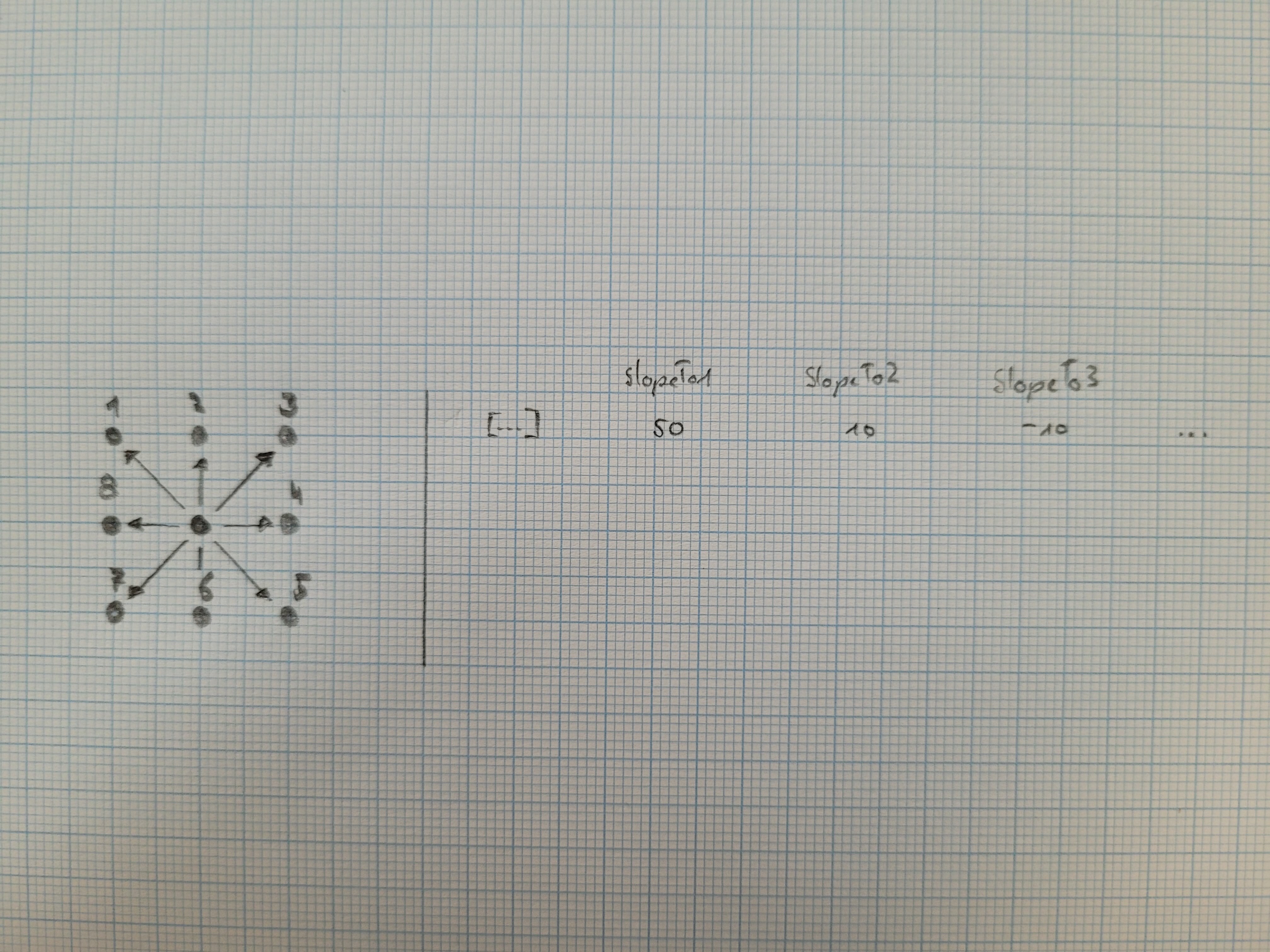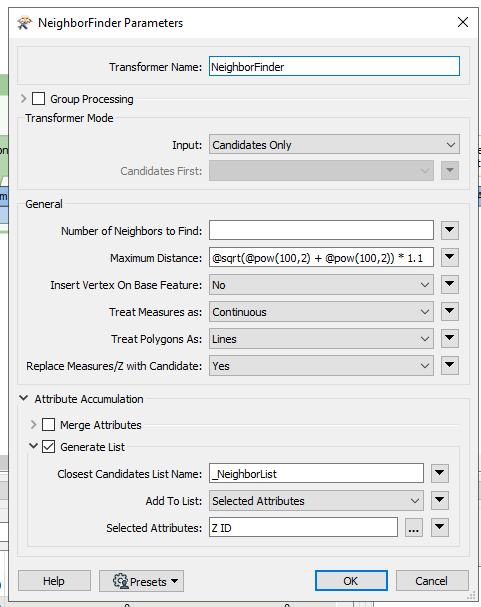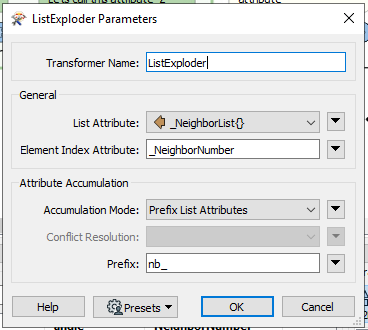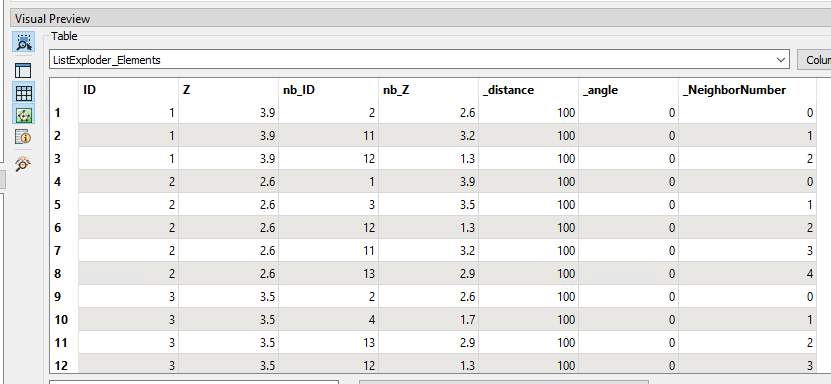Hello
I'm currently transforming a GeoTiff in a point raster using centerpointreplacer. I have a grid of points every 100m.
The next step is to add 8 attributes for the 8 neighbours (or less if the point is on a border) and in each attribute set the slope from this point to the neighbor [in %].
I have z values for each point, I don't know how to get the distance between 2 points and how to add the attributes according to the neighbors.
Maximum distance for neighbors: @sqrt($(Resolution)^2 + $(Resolution)^2) * 1.1

Thanks,
Antoine










 These are the settings of my NeighborFinder:
These are the settings of my NeighborFinder: As you can see under Attribute Accumulation, I collect all values from the Z attribute to the list called _NeighborList.
As you can see under Attribute Accumulation, I collect all values from the Z attribute to the list called _NeighborList. 
 The ListExploder basically multiplies your input features with the amount of list elements. I have prefixed the neighbor attributes with nb_ to avoid confusion. 'Z' and 'ID' are from the original point and 'nb_Z' and 'nb_ID' are from the neighboring points.
The ListExploder basically multiplies your input features with the amount of list elements. I have prefixed the neighbor attributes with nb_ to avoid confusion. 'Z' and 'ID' are from the original point and 'nb_Z' and 'nb_ID' are from the neighboring points.